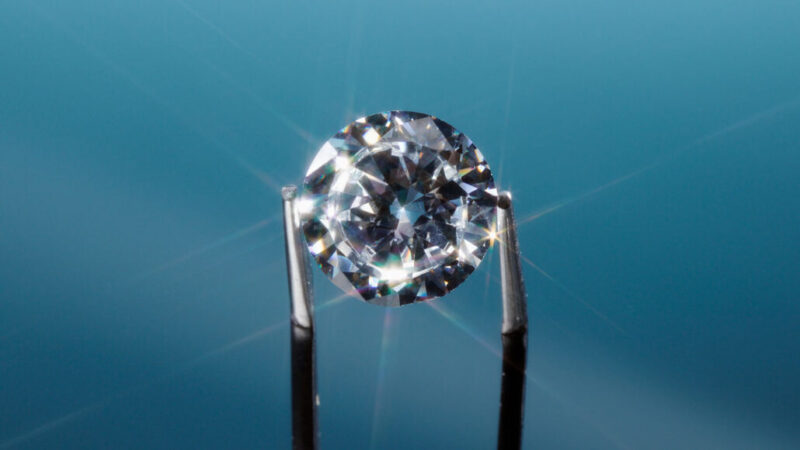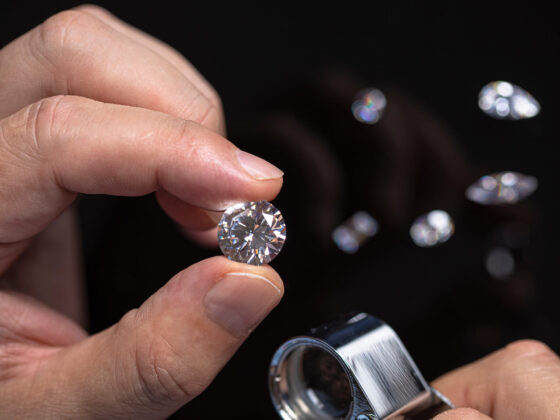In recent years, the application of Moissanite in education has gained momentum. This advancement is due to an increased understanding of the science behind this fascinating material. From its discovery as a naturally occurring mineral to its current use as a durable gemstone and artificial semiconductor, Moissanite holds many potential applications for both students and educators alike.
In this article, we will explore how moissanite diamond has become an integral part of modern classrooms and delve into the science that makes it so special. We will discuss how teachers can make use of this versatile material while providing their students with engaging lessons that they won’t soon forget.
Introduction to Moissanite and Its Educational Benefits
Moissanite is gaining increasing recognition in the world of science and education for its unique capabilities. It is a naturally occurring mineral, composed of silicon carbide, that is created under extreme temperatures and pressures which are found deep within the Earths mantle. Its applications in educational settings range from being used as a tool to increase student engagement to providing students with a hands-on learning experience through activities such as crystal growing experiments.
This introduction will explore moissanite’s properties and explain how they can be applied to enhance teaching methods in classrooms. Moissanite has an extremely high thermal conductivity rate which makes it ideal for experiments involving heat transfer or thermodynamics. In addition, it also displays strong electrical resistance when exposed to powerful electric fields – making it useful for electricity-related demonstrations and projects.
Furthermore, due to its low weight yet durable nature, moissanite crystals have been utilized by schools across the globe as part of their curriculums on geology topics such as crystallography or metamorphic rocks. In conclusion, this introduction has outlined some of the key features associated with moissanite that make it an invaluable resource for educators looking to introduce new concepts into their lessons plans or provide innovative hands-on experiences for students. With its ability to expand horizons both inside and outside of the classroom setting coupled with its long lasting durability – moissanite provides teachers with limitless possibilities when attempting to engage learners on topics related to science and technology!
The Science Behind Moissanite: An Overview

Moissanite is an incredible mineral that has been studied and used in classrooms around the world. It has a fascinating history, having first been discovered by Henri Moissan while working in a meteor crater. The science behind moissanite is incredibly complex, with its properties ranging from fire to hardness, brilliance, and even thermal conductivity. Moissanites ability to adapt to different temperatures allows it to be used for countless applications including jewelry-making and electronics manufacturing.
Its optical clarity also makes it perfect for use in optics research, lasers and LED lighting technology. In addition to its technological capabilities, moissanite’s impressive strength lends itself well for educational purposes; it can be shaped into small pieces of art or cut into intricate designs providing students with interesting projects that showcase their creativity and understanding of the material’s unique properties. With all these features combined, theres no doubt that the science behind moissanite continues to fascinate researchers around the globe!
Moissanite in the Classroom: Teaching Students about its Properties
Moissanite is an increasingly popular material in educational settings, thanks to its unique properties and potential for a variety of applications. In the classroom, moissanite can be used to teach students about cutting-edge science and technology. Students can explore how this synthetic gemstone is made from silicon carbide crystals, as well as learn about its hardness on the Mohs scale and how it compares with other materials.
They can also investigate its optical properties including refraction index, dispersion rate and birefringence which make it sparkle like diamonds without having to pay a hefty price tag. Moissanite’s versatility allows teachers to show their students many creative ways the material might be used in everyday life such as jewelry making or engineering projects involving LED lights or lasers.
With its remarkable physical characteristics, moissanite offers an exciting opportunity for educators seeking new methods of engaging their classes while introducing them to important scientific principles and innovative technologies within reach today’s classrooms.
Exploring Practical Applications of Moissanite for Educational Purposes

Moissanite has a unique place in the world of science and education. It is a versatile material that can be used to explore many different phenomena, from simple electricity experiments to complex quantum physics. In the classroom, Moissanite can provide students with an engaging way to learn about chemistry, physics, mathematics and more. For example, teachers could use Moissanite to help students understand basic concepts such as force and velocity or even introduce them to advanced topics like thermodynamics and nanotechnology.
By using Moissanite as part of their educational activities, students will gain an understanding of the importance of critical thinking when it comes to solving problems in real-world scenarios. In addition to providing valuable learning experiences for students, educators are also finding practical applications for Moissanite in classrooms around the world. Many schools have begun incorporating this material into their curriculums due its ability to absorb heat quickly which makes it great for conducting temperature experiments or demonstrations on energy transfer within systems.
Furthermore, its remarkable electrical properties make it ideal for teaching circuits or exploring electrochemistry reactions with ease – something that would otherwise require expensive laboratory equipment. Its versatility means that there are endless possibilities when it comes to utilizing Moissanite’s attributes in an educational setting; giving both educators and pupils many exciting opportunities along the way!
Summary
Summary: Moissanite, a mineral discovered by Henri Moissan in 1893, has recently gained attention for its potential to revolutionize the educational landscape. This article explores the science behind moissanite and how it can be used in classrooms around the world.
The physical properties of moissanite make it an ideal material for experiments that teach students about heat transfer, light refraction, and optical properties. In addition to being used as a teaching tool in classrooms, researchers are exploring ways to use moissanite to increase energy efficiency in homes and businesses. By demonstrating applications of this incredible discovery, educators have the opportunity to help inspire their students’ curiosity about science while giving them tools they can use in everyday life.



